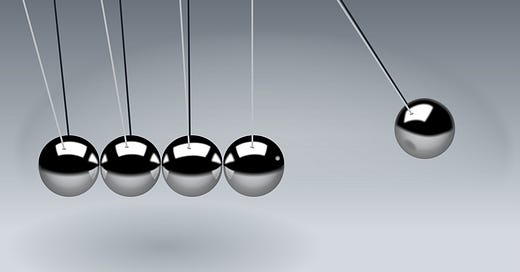Introduction
Welcome to The ContraMind Code.
The ContraMind Code provides you with a system of principles, signals, and ideas to aid you in your pursuit of excellence.
The Newsletter shares the source code, through quick snapshots, for a systems thinking approach to be the best in what you do.
The Code helps you reboot and reimagine your thinking by learning from the best and enables you to draw a blueprint on what it takes to get extraordinary things done.
The End of Manual Transmission
by Ian Bogost
Ian Bogost is a contributing writer at The Atlantic, and he writes about the impact of declining sales of manual transmission vehicles in the automotive industry. He writes it may be no accident that the formal crusade arose just as computation overtook culture, steering human lives in the direction of technology companies and data aggregators’ needs.
He goes on to explain:
Manual transmission’s chief appeal derives from the feeling it imparts to the driver: a real or imagined sense that he or she is in control.
Cognitive enhancement is possible only when you can interpret the components of the tool you’re operating.
Modern automotive technology tends to inhibit that sensation.
Automatic transmissions obstruct the “natural bonds between action and perception.”
Manual transmission’s impending disappearance feels foreboding not because shifting a car is fun and sensual but also because the gearshift is or was a powerful cultural symbol of the human body working in unison with the engineered world.
If the automatic transmission made the stick shift a monument to lost control, the autonomous (self-driving) vehicle aims to do the same for the steering wheels.
Read more here
Who Gets Laid-off First?
Ken’s Cost to Company podcast covers various topics around how your workplace is changing.
Here’s on this topic of ‘Who Gets Laid-off First’, a lot of interesting and valuable perspectives are shared and tabled for you to think and reflect on:
Here are some key takeaways:
This is not a lay-off season but a reality season!
Inflated salaries and valuations were the order of the day in the 2020s/2021. In 2022, things are returning to fundamentals - revenue and profitability are the theme and growth at any cost are taking a back seat.
Who gets laid off first? One hypothesis is it depends on the strategy of the company and the stage at which the company is - Do they want to bet more on products, less on R&D and refocus on specific geographies or business verticals in the future? That decides who will be laid off.
The ones who were practical and ran a tight ship even during exuberant times are not laying-off as many people as the ones who ran behind funding, adding irrational costs and valuations.
Employees are also to equally blame as they traded various offers to get the highest bids from different employers and ditched the employers just before joining during the days of euphoria. And they jumped from one offer to another, leading to ballooned costs in companies which are now being trimmed.
‘The soft skills of the past are the hard skills of the present”, which will keep them on the ship. The ability to unlearn and relearn is essential.
Pick the job for the right reasons. Stay true to commitments.
Employers and investors must hire for the right reasons.
A Plan Is Not a Strategy
In this Harvard Business Review Video, Roger Martin, former dean of the Rotman School of Management at the University of Toronto and one of the world’s leading thinkers on strategy, elucidates the difference between a plan and a strategy:
Here he talks about:
How starting with a plan is a terrible way to make a strategy
Why are leaders so comfortable focusing on planning
Therefore, what is strategy?
How to avoid getting into a ‘Planning Trap.’
The importance of Action-Perception
Reading through the article on the End of Manual transmission, one thing that caught our attention was the importance of not losing the Action-Perception bond humans possess while driving. Why is this important?
As technology and new devices continue to permeate our life, in every little thing that we do or use, it is expected all of us will increasingly but slowly lose the ability to have a sense of operating tools or doing them which were done manually earlier.
What the Action-Perception bond does is accentuates our ability to perceive the environment or events happening within the environment and our ability to, therefore, act.
Cricketers who have batted for a long time tend to see the cricket ball as larger than the actual size, almost like a football. Similarly, great tennis players see the ball moving slowly when they successfully return it. The same environment looks different depending on the perceiver’s abilities. This is what the Action-Perception bond does.
Imagine everybody starting to follow automated scripts and algorithms as a response and behaviour.
Therefore, we need to continuously improve our ability to perceive things better as it helps us sense them, take control and act. When we allow the algorithms to take over completely, we lose the ‘raw sensibilities’ that we possess and slowly, our intuitive nature fades away.
This is something we cannot afford to lose as ‘soft skills’ will be an unbeatable competitive advantage for people in an increasingly automated, digital-enabled and technology-centric world.
Some of the lessons we learnt from this week’s mission:
Cognitive enhancement is possible only when you use many tools and operate them. Do a few manual things that challenge your cognitive skills, and it is essential not to let our intuitive skills and sensation die.
Soft skills of the past are the hard skills of the present. Be ready to learn and unlearn.
Don’t confuse planning for strategy.









